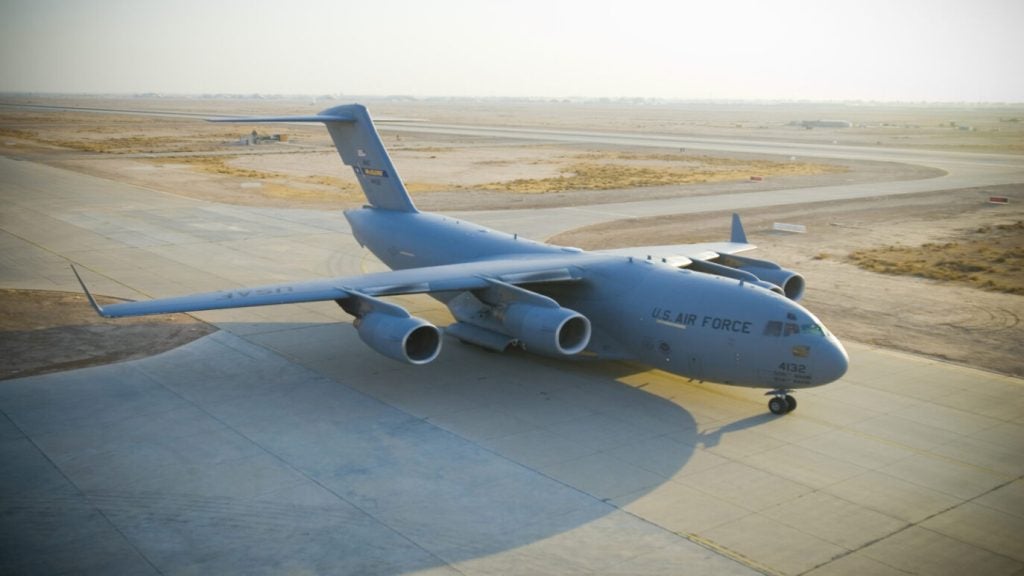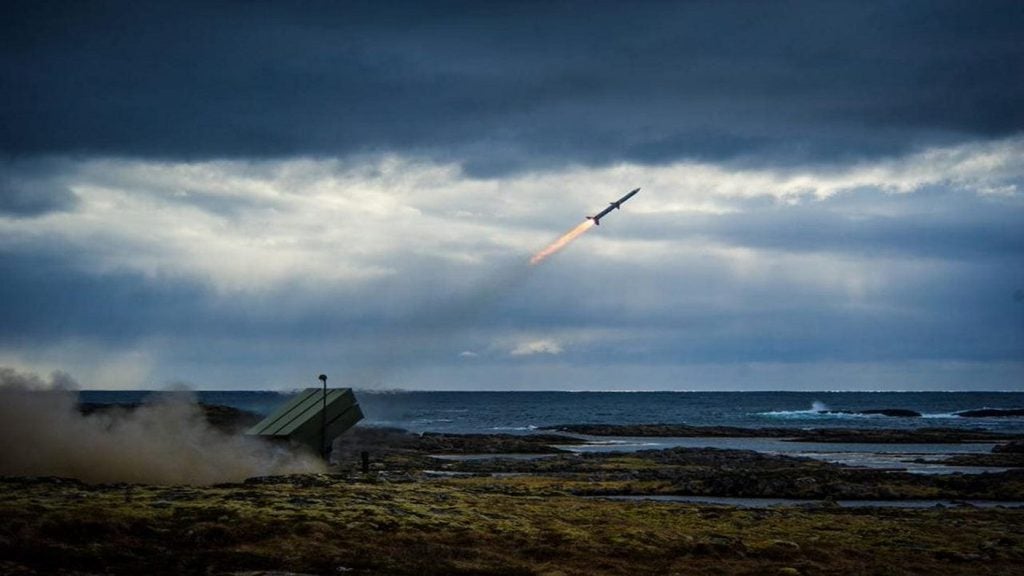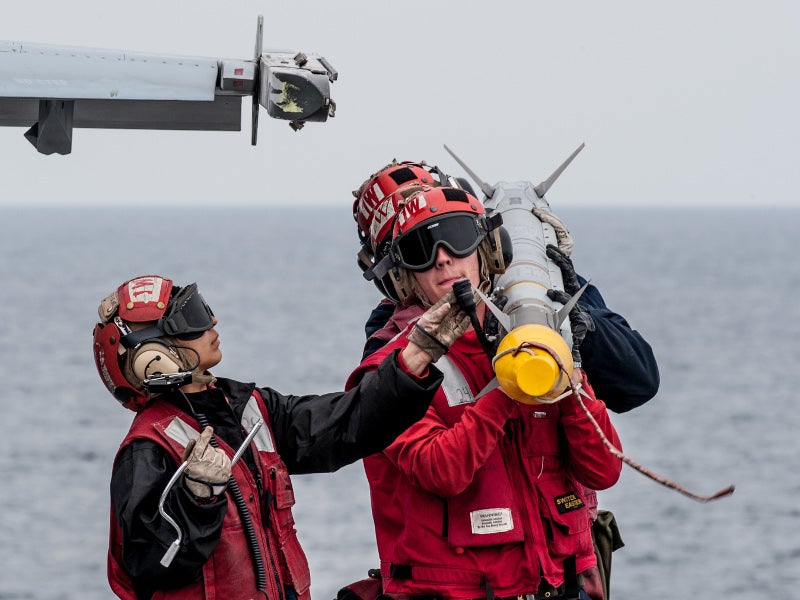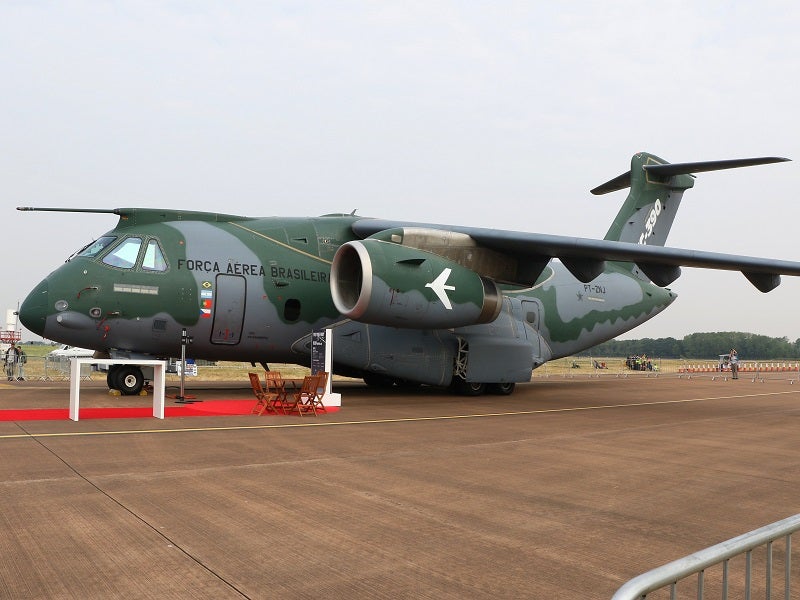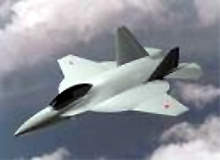
The US’s F-22 Raptor, which had never flown outside the US, gives the clearest indication of where technology is likely to lead the military sector in the coming years.
The Lockheed Martin-built stealth fighter is capable of reaching speeds of up to 1,500mph, and has a range of 2,000 miles. It is equipped with a 20mm cannon, six Aim-120 air-to-air missiles and two Aim-9 heat-seeking missiles, which are carried internally, making the aircraft harder to detect on radar screens. The stealth qualities of the Raptor make it ideal for surveillance and intelligence work.
At Farnborough Air Show, held in the UK in July, the Raptor gained a lot of attention from companies and spectators wanting a rare chance of viewing the craft. The Russian contingent, however, had its hopes pinned on another aircraft – the Sukhoi PAK FA, which they promise will match the Raptor.
The Sukhoi twin-engined fighter is expected to have thrust vectoring and supercruise ability, plus stealth capabilities. However, whether the Russians have the funds or the technological ability to match the Americans must be in doubt. Russia’s new fighter will be built at the Komsomolsk-on-Amur aircraft-manufacturing plant in Russia’s Far East and could enter service in 2013.
The use of stealth technology is certainly likely to expand over the next decade and the world’s first STOVL stealth fighter, the F-35 Lightning, was also on display at Farnborough. The plane flew for the first time in June 2008, but the main new technologies of the F-35, its vertical-thrust and short-take-off capabilities, have yet to be tested.
Drones are a rapidly growing market
How well do you really know your competitors?
Access the most comprehensive Company Profiles on the market, powered by GlobalData. Save hours of research. Gain competitive edge.

Thank you!
Your download email will arrive shortly
Not ready to buy yet? Download a free sample
We are confident about the unique quality of our Company Profiles. However, we want you to make the most beneficial decision for your business, so we offer a free sample that you can download by submitting the below form
By GlobalDataDrones are also likely to be a major growth area of defence budgets in the coming years. Raytheon unveiled its new control system for unmanned aerial vehicles (UAVs) at Farnborough. The company says that its universal control system, which uses some hardware from the gaming world, will shorten training time and help to prevent crashes of UAVs by making it easier for the pilot to control the aircraft.
Raytheon is keen to exploit the rapidly growing use of drones in both military operations and civilian projects around the world. The US already has 5,000 drones, mainly on patrol in Afghanistan and Iraq. The overall global market is expected to rise from $3.5bn to $55bn over the next ten years, according to the Teal Group. Defence specialists at Farnborough all seemed to agree that military and business demand for UAVs is about to explode, just like the market for satellites in the 1970s.
The success of drones in both Iraq and Afghanistan has spurred demand.
However, the increased use of drones has highlighted problems with their control systems. Many crashes have been blamed on pilot error. Raytheon, which has been building its system for the past three years, has been in discussions with the US Air Force and the Royal Air Force and hosted several delegations that showed an interest at Farnborough, including the Saudi International Guard.
Raytheon’s new console provides a more interactive experience for the pilot, which Raytheon believes holds the key to reducing pilot error. “We wanted the human to get into a cockpit and feel they are stepping into the system,” Mark Bigham, director of business development, said at the air show.
Raytheon has replaced keystrokes with a game console, after consulting with experts and discovering that thumbs are the most energy-efficient and accurate way to control an aircraft.
The trajectory of the UAV is displayed on three large, flat screens, which are augmented with digital images that provide almost a 180° view. A fourth screen contains information on the status of the craft and troop locations, which is presented in much the same way that games consoles provide extra on-screen information about characters and ammunition levels.
Special-mission aircraft
Demand for special-mission aircraft, which can be used for intelligence, surveillance and reconnaissance, is also expected to grow rapidly. A number of new aircraft in this category were on display at Farnborough, including: the Israeli Eitam, which is based on Gulfstream’s G550 business jet; the Erieye 2000 AEW&C aircraft, based on the Saab-2000 platform; and the ASTOR, which is based on a Bombardier Global Express business
jet, modified by Raytheon to carry the synthetic aperture radar (SAR).
Boeing displayed two versions of its 737 jetliner, including the P-8A Poseidon special-mission maritime aircraft. Boeing is offering the Poseidon as a replacement for the US Navy’s aging EP-3E Aries II Sigint aircraft and it may have an eye on the market in the UK, where the aircraft could be a replacement for the Nimrod R1.
Fly-by-wire is one of the main areas of technological focus in the helicopter sector and Sikorsky announced at Farnborough that its Sikorsky UH-60M Black Hawk fly-by-wire helicopter would be ready to make its first flight within 60 to 90 days. Sikorsky is focusing its development efforts on three key technology areas: speed, autonomous flight and a ‘self-actualised’ platform.
Sikorsky said that it expected to achieve another milestone in 2008 with the first flight of its X2 helicopter. The X2 is designed to demonstrate that a helicopter can cruise comfortably at 250kt, while retaining such desirable attributes as excellent low-speed handling, efficient hovering and autorotation safety, and a seamless and simple transition to high speed. The helicopter also utilises fly-by-wire technology.
Sikorsky believes that the X2 will be ideally placed to serve as an armed escort for the Bell Boeing V-22 Osprey tiltrotor and undertake other combat missions. Sikorsky is forecasting that transport / utility helicopters will account for up to 70% of the international military market for helicopters between 2008 and 2017, with attack types representing the remainder.
A ‘self-actualised’ helicopter will identify components that need replacing, order the components and suggest to the mechanics whether the component needs to be installed immediately or during the next session of scheduled maintenance. With defence budgets under pressure around the world, this development, which should lead to cost savings, could spread to other areas of the military sector.



